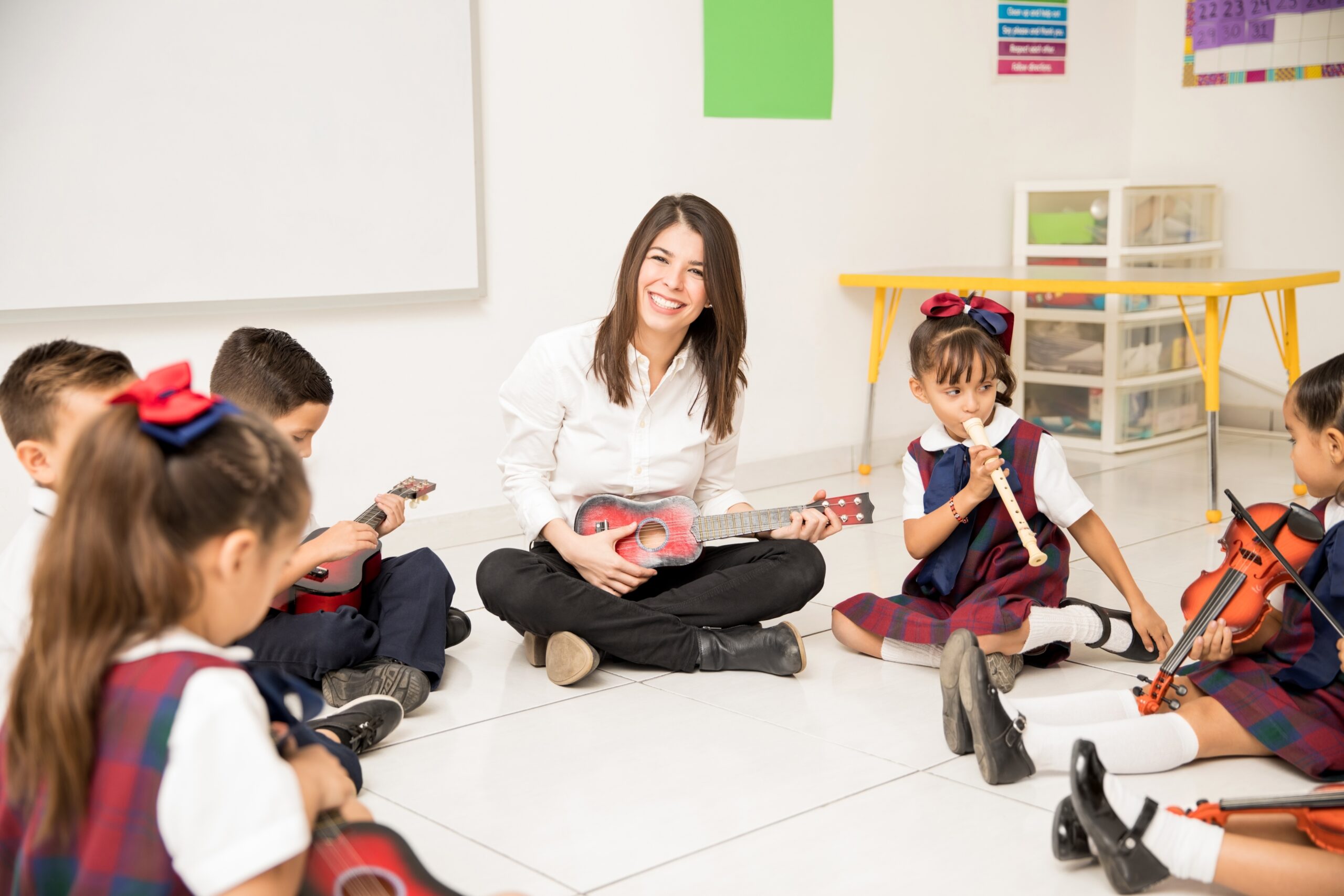
Songwriting has always been dear to my heart. As a child, it was a way for me to express a snapshot of my feelings through sound and lyrics I couldn’t quite speak verbally. I used to write a song and then eagerly discuss the meaning with my parents. They would of course, shower me with positive reinforcement which made me feel good about myself and closer to them. Later, I pursued a degree in songwriting from Berklee College of Music. Songwriting has been the passion of my life and something I love teaching others. This article will discuss the importance of songwriting in the elementary classroom and give a few ways you can include it in your own lessons.
Why Teach Songwriting?
Songwriting gives students the opportunity to become active participants in making music instead of passive listeners. The music classroom should be an active space for hands on learning experiences. Songwriting gives students a chance to explore the interaction of melody, harmony, and lyrics together in this way. It is an opportunity to turn music theory ideas into real tangible music. Songwriting can be a fun project for elementary students who can work individually or as a group and share with the class. Songwriting builds confidence in students and fosters personal exploration of themselves.
How to Teach Songwriting to Elementary Students
- Call and Response – It is important to create a safe environment for younger students to begin sharing their own musical ideas. Through fun activities using call and response, children can think spontaneously and respond to short prompts. You can use rhythms or a simple melody using a few notes such as sol-mi to create lyrics for. These activities can be performed sitting in a circle and offer children a chance to start creating music without having to create an entire song. The focus can be on one musical idea, so they can build confidence.
- Make a Game of it– Draw a grid of squares on the board about 4 squares wide with four rows. Let students take turns filling in each square on the board with a body percussion movement such as hand clapping, foot stomping, etc. When all the squares are complete, perform the song as a class.
- Cut and Paste Activities – Use a worksheet to cut and paste familiar rhythms such as quarter notes and eighth notes in any order. Give students the opportunity to perform their rhythm composition for the class. Click here for a rhythm worksheet pdf.
- Integrate Other Subjects – Let students write lyrics about a subject they are learning about from history, science, or english. Make the writing prompts specific and limit lyric writing at first to a verse or chorus, specifying the rhyme scheme. You can use ABAB and AABB to keep it simple. Student will enjoy sharing their lyrics with the class and teachers will appreciate the extra practice in the subject they are learning.
- Use Technology – Use simple apps to let students explore songwriting. For more information on technology in the music classroom, you can read this article. Some apps let the students record their own performances while others allow students to play with loops and samples.
- Become Active Listeners – Analyze songs for their form and meter. Practice transcribing simple melodies using solfege. This will make it easier for older elementary students to transition into writing down their own ideas as they hear them in their head and understand the components that go into music.
- Allow Positive Feedback – Give students opportunities to provide positive feedback to their peers. Set rules beforehand so people don’t feel embarrassed. Create a nurturing environment where students can discuss why they chose certain rhyming words or a particular tempo, etc. Try to link the musical ideas to their song. For instance, it was a sad lyric, so they chose a minor chord instead of a major chord. Or the song was about hopping rabbits so the tempo was fast.
The possibilities for composition activities are limitless. Creating lessons that graduate in difficulty from kindergarten through the fifth grade help songwriting to become a familiar experience for students which they can be confident about and eventually do with ease. From simple call and response activities in kindergarten to writing full three minutes songs in the fifth grade, students will be active participants in making music and enjoy the process of creating. You may even have a few students bring you a song they wrote at home. I hope these ideas help you in your lesson planning. Please leave a comment below about how you incorporate songwriting and composition in your class.

